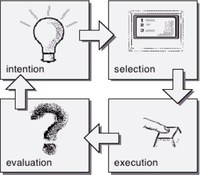[C5] Procedure Library
| When | Jan 01, 1987 |
|---|---|
| Where | London |
Aim: To improve standards of interoperability in the design of educational computer programmes.
Reflection: This work followed earlier attempts in the Computers in the Curriculum project to standardise software development and user interface in order to provide users with confidence, but this was not agreed by all. Others were keen to innovate and felt that standards would inhibit innovation. The needs of users won out in the end as the industry more widely created graphical user interfaces with consistent controls and software developers reaped the benefits, particularly pioneered in the Apple Macintosh operating system. I learnt that a learner-centred approach helped design decisions in this contested area of development.
Contribution: I designed the set of procedures and functions, wrote the BBC BASIC and Pascal code and technical guide and co-authored the design guide which included the creation of the diagram and analytical explanations. My part: 50% (with David Riley)
In the late eighties, BASIC as a programming language was beginning to show its age. It had originally been chosen for its ubiquity on small computers that schools and colleges could afford, but towards the end of the decade, computing power had increased to the point were a much wider range of powerful programming languages were readily available.
This situation inspired the development of the Procedure Library, focussing on BBC BASIC's extended capabilities and the language Pascal on other systems. It was intended to continue the principle of interoperable development established in the earlier Subroutine Library. As well as the program code for the Procedure Library, two guides were written in October 1988 'The Procedure Library Technical' Guide and 'The Procedure Library Design Guide'.
I worked on the latter with David Riley to produce the diagram Analysis of a Single Interaction (Millwood and Riley 1988) after reading Donald Norman's work breaking down the steps of interaction with a user interface.

which we expanded on to analyse the user's perspective when engaging with educational software.
I published this thinking more recently as this poster, 'An analysis of a single interaction'
Originality, impact and importance: The design, code and analysis were new, based on lessons learnt over seven years of using a BASIC subroutine library and the best of graphics routine library literature (Newman and Sproull 1989). The impact and importance was on the development and design of educational software by the Computers in the Curriculum team.
(Words: 463 )


